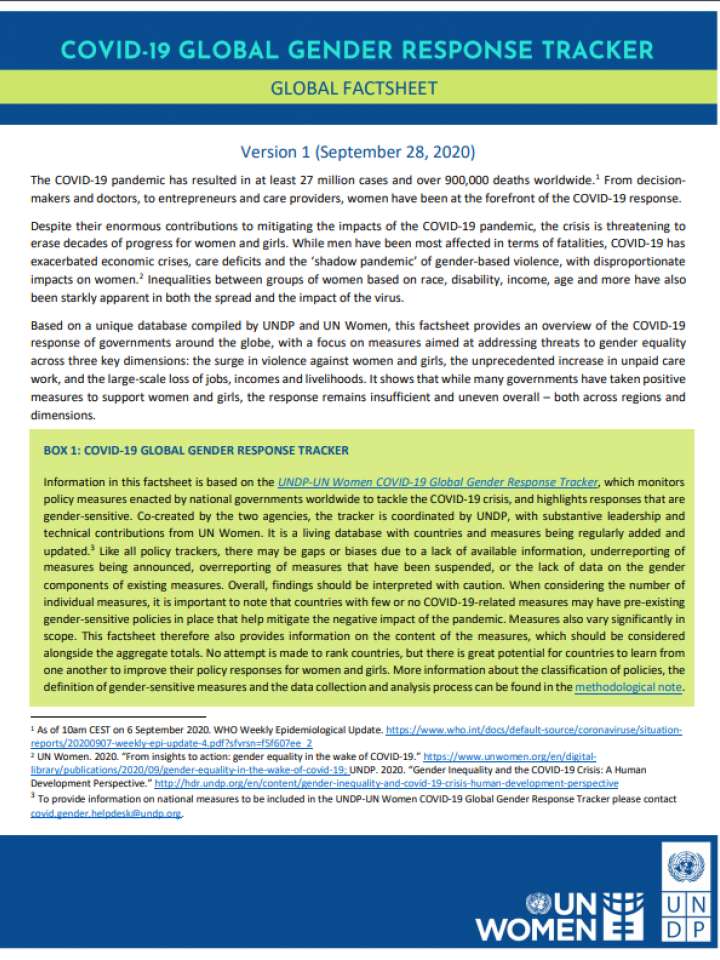COVID-19 global gender response tracker fact sheets
The COVID-19 pandemic has resulted in at least 27 million cases and over 900,000 deaths worldwide.1 From decisionmakers and doctors, to entrepreneurs and care providers, women have been at the forefront of the COVID-19 response.
Despite their enormous contributions to mitigating the impacts of the COVID-19 pandemic, the crisis is threatening to erase decades of progress for women and girls. While men have been most affected in terms of fatalities, COVID-19 has exacerbated economic crises, care deficits and the ‘shadow pandemic’ of gender-based violence, with disproportionate impacts on women.2 Inequalities between groups of women based on race, disability, income, age and more have also been starkly apparent in both the spread and the impact of the virus. 3
Based on a unique database compiled by UNDP and UN Women, this factsheet provides an overview of the COVID-19 response of governments around the globe, with a focus on measures aimed at addressing threats to gender equality across three key dimensions: the surge in violence against women and girls, the unprecedented increase in unpaid care work, and the large-scale loss of jobs, incomes and livelihoods. It shows that while many governments have taken positive measures to support women and girls, the response remains insufficient and uneven overall – both across regions and dimensions.
Explore further

